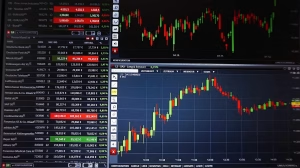Understanding the S&P 500 – The S&P 500, short for Standard & Poor’s 500, is one of the most widely followed stock market indices in the world. Often regarded as a barometer for the U.S. economy and stock market, the S&P 500 tracks the performance of 500 of the largest publicly traded companies in the United States. Whether you’re a seasoned investor or a beginner trying to understand how markets work, understanding the S&P 500 is essential for making informed financial decisions.
Understanding the S&P 500: What Is the S&P 500?
The S&P 500 Index is a market-capitalization-weighted index that includes 500 leading companies from various sectors of the U.S. economy. It was introduced in 1957 by Standard & Poor’s, a financial services company now known as S&P Global. Unlike the Dow Jones Industrial Average, which tracks only 30 companies, the S&P 500 offers a broader and more accurate snapshot of the market’s overall health.

Sectors Represented in the S&P 500
The S&P 500 includes companies across 11 sectors, such as:
- Information Technology
- Health Care
- Financials
- Consumer Discretionary
- Industrials
- Communication Services
- Consumer Staples
- Energy
- Utilities
- Real Estate
- Materials
This diversity ensures that the index is not overly reliant on any one industry, helping it serve as a reliable indicator of the broader market.

S&P 500
How Is the S&P 500 Calculated?
The S&P 500 is a market-cap-weighted index, meaning each company’s influence on the index is proportional to its market capitalization. Market cap is calculated by multiplying a company’s stock price by its total outstanding shares.
Example:
If Apple has a market cap of $3 trillion and another company in the index has a market cap of $30 billion, Apple’s performance will have a significantly greater impact on the index’s movement.
The index is recalculated continuously during market hours and updated regularly to reflect new economic realities, such as mergers, bankruptcies, and shifts in company size.
Why Is the S&P 500 Important?
There are several reasons why the S&P 500 holds such a critical place in financial markets:
1. Benchmark for Investors
The S&P 500 is commonly used as a benchmark to compare the performance of mutual funds, ETFs (Exchange-Traded Funds), and other investments. If a mutual fund claims to be outperforming the market, it is often referencing the S&P 500.
2. Economic Indicator
Due to its broad composition, the index is often seen as a proxy for the U.S. economy. If the S&P 500 is performing well, it generally indicates investor confidence and economic growth.
3. Basis for Investment Products
Many investment products, including index funds and ETFs like SPY and VOO, are designed to track the S&P 500. These products offer investors a low-cost, diversified way to gain exposure to the U.S. stock market.

Criteria for Inclusion in the S&P 500
Not just any company can be part of the S&P 500. The S&P Index Committee uses a set of strict guidelines to determine which companies qualify:
- Must be a U.S.-based company
- Have a market cap of at least $14.5 billion (as of 2025 thresholds)
- Be highly liquid
- Have at least 50% of its stock publicly available
- Show positive earnings in the most recent quarter and over the last four quarters combined
- Be listed on a major U.S. exchange like the NYSE or NASDAQ
These stringent criteria ensure the quality and relevance of the companies included in the index.
Investing in the S&P 500
1. Index Funds and ETFs
The most common way to invest in the S&P 500 is through index funds or ETFs that replicate its performance. Popular choices include:
- SPDR S&P 500 ETF Trust (SPY)
- Vanguard S&P 500 ETF (VOO)
- iShares Core S&P 500 ETF (IVV)
These funds aim to mirror the index’s returns and are ideal for long-term investors seeking diversification.
2. 401(k)s and Retirement Accounts
Many retirement plans include S&P 500 index funds as a core investment option due to their strong historical performance and broad exposure.
3. Dollar-Cost Averaging
Because markets can be volatile, many investors use a strategy called dollar-cost averaging—investing a fixed amount at regular intervals—to reduce the impact of market fluctuations.

Historical Performance of the S&P 500
Historically, the S&P 500 has delivered average annual returns of about 10%, including dividends, since its inception. This track record makes it one of the most attractive long-term investments.
Despite market downturns such as the 2008 financial crisis and the COVID-19 pandemic crash in 2020, the index has consistently rebounded, underlining the resilience of the U.S. economy and its corporations.
Risks and Limitations
While the S&P 500 is a powerful investment tool, it’s not without risks:
- Market Volatility:
The index can be affected by geopolitical events, interest rate changes, inflation, and economic downturns.
- Sector Imbalance:
At times, certain sectors (like tech) can dominate the index, making it less balanced than it appears.
- U.S.-Centric:
It only includes U.S. companies, so it may not provide global diversification.
Understanding these risks can help investors make smarter choices and better manage their portfolios.
S&P 500 vs. Other Indices
To put the S&P 500 in context, let’s compare it with a few other major indices:
- Dow Jones Industrial Average (DJIA):
Tracks 30 large-cap stocks. It’s price-weighted, which can skew its representation of the market.
- Nasdaq Composite:
Heavily weighted toward technology stocks, offering less diversification.
- Russell 2000:
Focuses on small-cap stocks, representing a different market segment.
While all these indices serve different purposes, the S&P 500 is often considered the most balanced and representative.
Conclusion
The S&P 500 is more than just a collection of 500 companies—it’s a cornerstone of the global financial system. Whether you’re a new investor or a financial professional, understanding how the S&P 500 works can help you make smarter investment decisions, build a diversified portfolio, and keep your long-term financial goals in focus.
By offering a broad snapshot of the U.S. economy, historical resilience, and easy investment options through index funds and ETFs, the S&P 500 continues to be a reliable path for long-term wealth creation.
For more updates, visit https://tradingmarketsignals.com/








